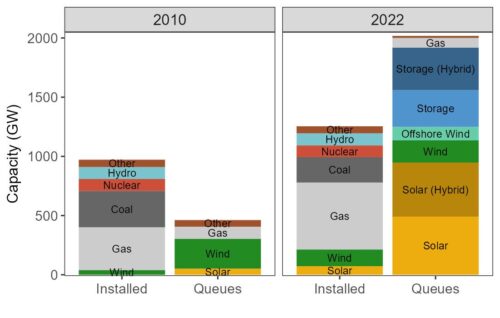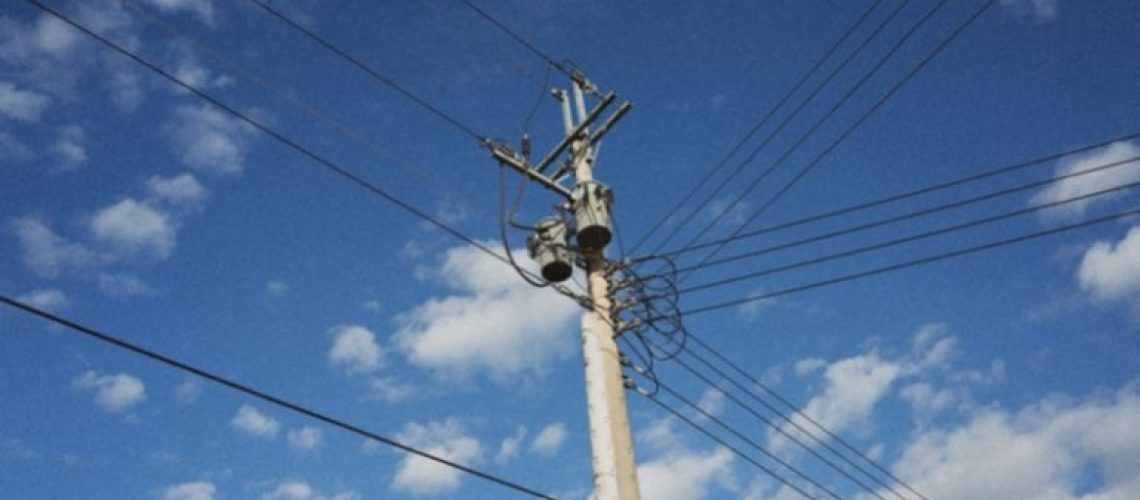 The amount of new power generation and energy storage in the transmission interconnection queues across the U.S. continues to rise dramatically, with over 2,000 GW of total generation and storage capacity now seeking connection to the grid, according to new research by Lawrence Berkeley National Laboratory. The queues indicate particularly strong interest in solar, battery storage and wind energy, which account for 95% of all proposed capacity. In fact, the combined solar and wind capacity now actively seeking grid interconnection (~1,250 GW) approximately equals the installed capacity of the entire U.S. power plant fleet.
The amount of new power generation and energy storage in the transmission interconnection queues across the U.S. continues to rise dramatically, with over 2,000 GW of total generation and storage capacity now seeking connection to the grid, according to new research by Lawrence Berkeley National Laboratory. The queues indicate particularly strong interest in solar, battery storage and wind energy, which account for 95% of all proposed capacity. In fact, the combined solar and wind capacity now actively seeking grid interconnection (~1,250 GW) approximately equals the installed capacity of the entire U.S. power plant fleet.
But this growing backlog has become a major bottleneck for project development: projects are taking longer and longer to complete the interconnection study process and come online, and most of these interconnection requests are ultimately canceled and withdrawn. Entering an interconnection queue is only one of many steps in the development process; projects must also have agreements with landowners and communities, power purchasers, equipment suppliers and financiers, and may face transmission upgrade requirements. Data from these queues nonetheless provide a general indicator for mid-term trends in developer interest.
Berkeley Lab compiled and analyzed data from the seven organized electricity markets in the U.S. and additional 35 utilities outside of those regions, which collectively represent over 85% of all U.S. electricity load. The findings are reported in a new slide deck, data file and interactive visualization that synthesize data from transmission interconnection queues throughout the United States to illustrate trends in proposed power plants across technologies, time, and regions.
“The interconnection queues illustrate both the opportunity and challenges of electric sector decarbonization in the U.S.,” said Joseph Rand, an energy policy researcher at Berkeley Lab and lead author of the study. “On the one hand, we see unprecedented interest and investment in clean energy development. On the other hand, the increasing delays and high withdrawal rates point to a major barrier for developers of these projects.”
Rand points out that the amount of solar, wind and storage in the queues today exceeds the amount needed to get to 90% of U.S. electricity from zero-carbon resources by 2035. President Biden has set ambitious goals to create a carbon pollution-free power sector by 2035 and net zero emissions economy by no later than 2050 to combat climate change.
“The trends in these interconnection queues suggest that developers are eager to meet this ambition, though they may face some headwinds,” Rand said.
News item from Berkeley Lab. Read the full report here.



